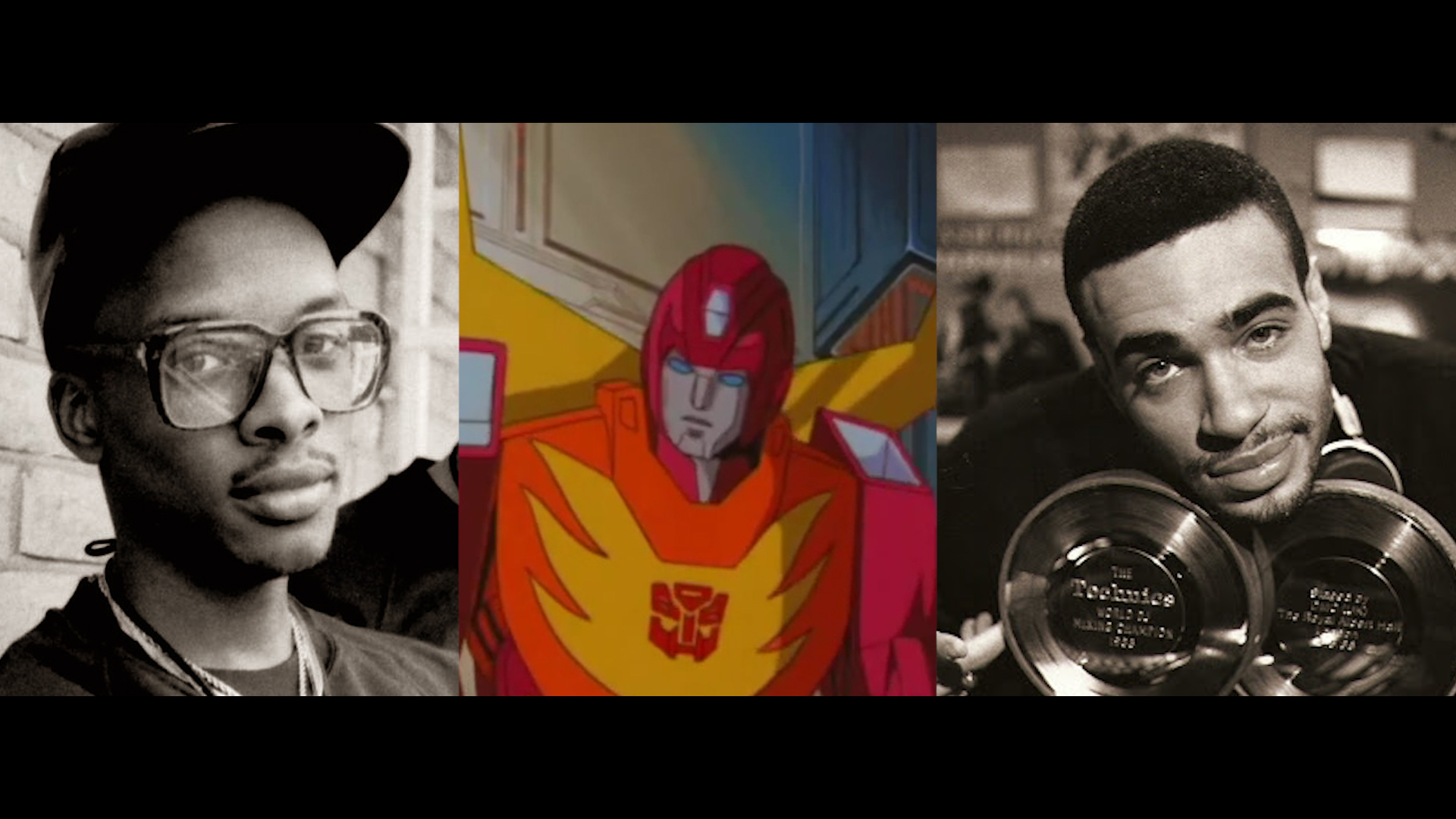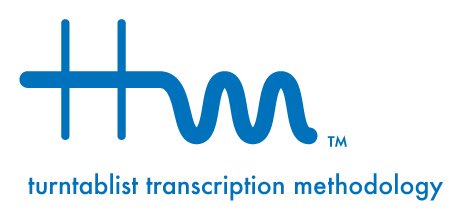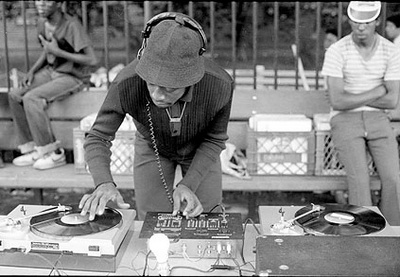
THE NEXT SCHOOL
Emerging in the mid-'80s was a growing group of short signature scratch patterns, which steadily propagated through the underground DJ scene. DJ’s spoke with their hands, laying in specialized cuts over song choruses, even under the MC rhymes. Here’s are few recorded examples that have endured, and stand out still.
For a DJ in the 80’s who loved to scratch, you had three ways of learning the latest scratches:
1. You knew someone who was a DJ - a cousin or friend who played at jams and they taught you everything they had learned.
2. You planted yourself near a DJ at a party, quietly watched every detail.
3. You taped every hip-hop radio show, and bought every rap album, then studied your favorite parts over and over till you cassette tapes snapped. This was a period before home videos, if you were lucky you had a friend with a VHS copy of DSt. performing on Solid Gold, Saturday Night Live or the Grammy Awards. Thus a good ear was a large part of your talent.
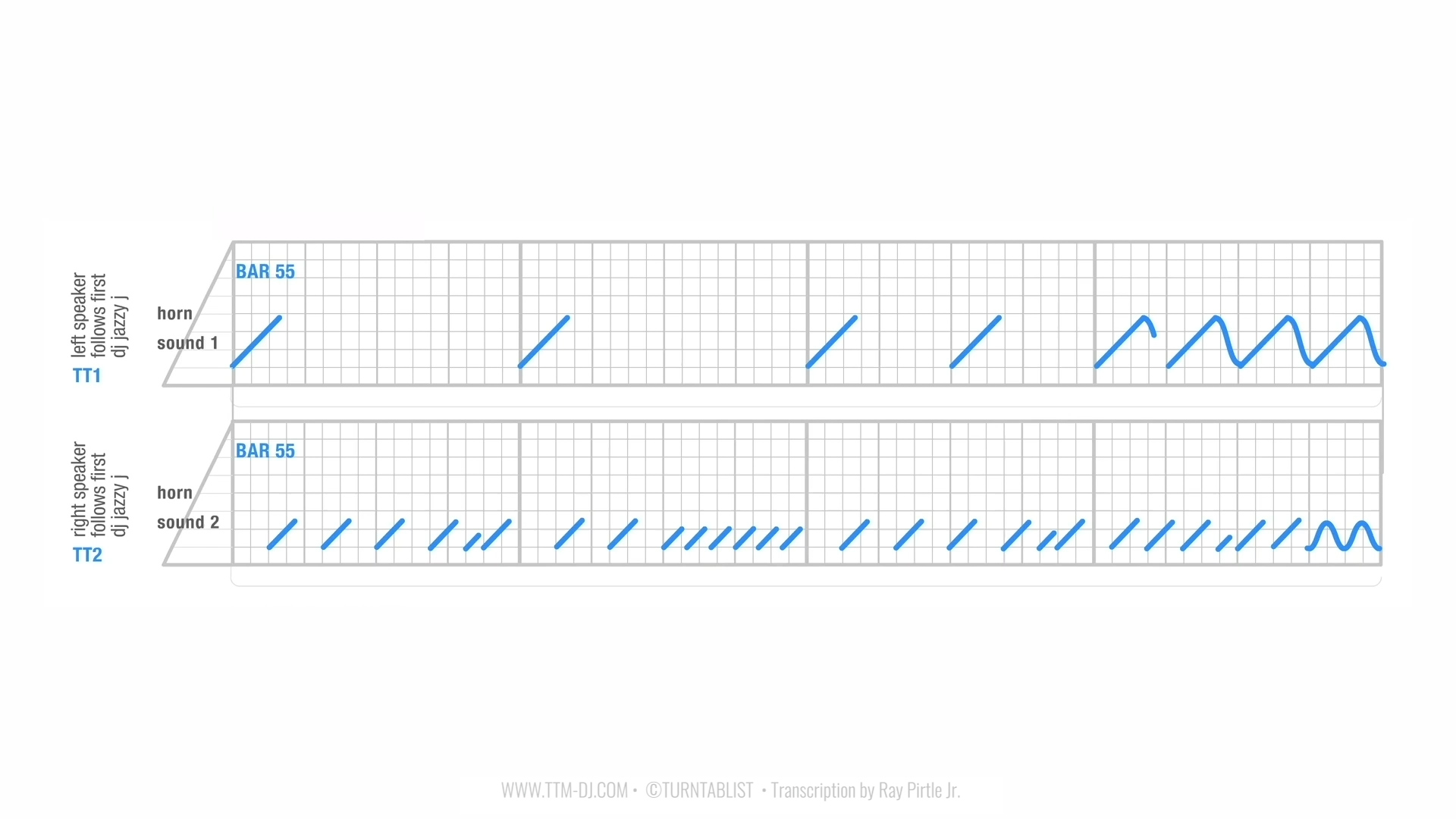
"Jazzy Jay scratched in all the right places," DJ Johnny Juice (Public Enemy) tells us, "introducing the record, under T La Rock's rhymes, into the chorus and even over his own scratching patterns, it all fit right".
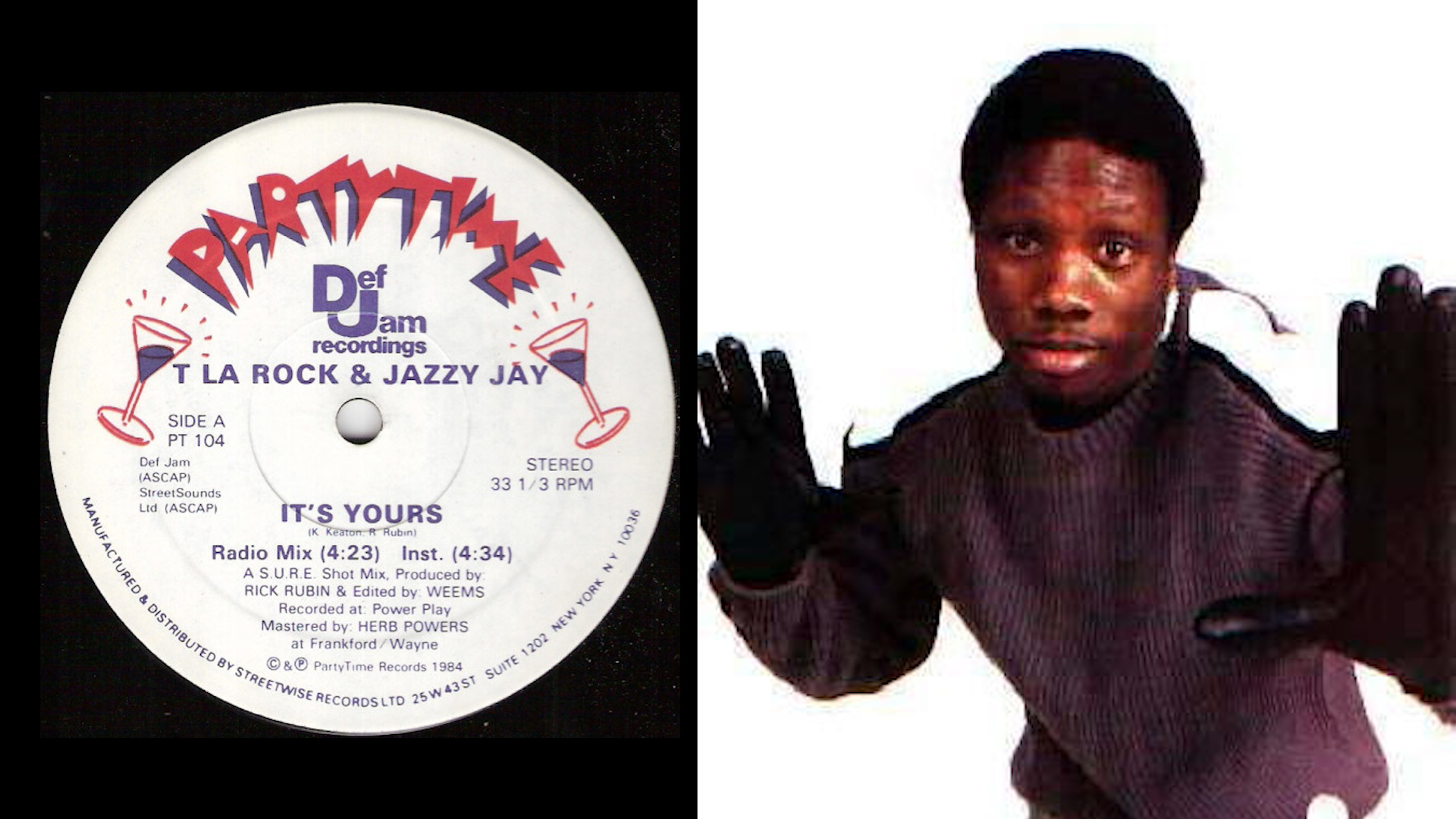
"It’s Yours" by T La Rock, might be the first example of multi-tracking scratches in a recording. The song was recorded in 1984, at the time in the development of hip-hop when it was common during live performances for DJs and MCs to improvise on top of one another’s contribution to a song.
Jay explains the style: "I would always add my little DJ flavor to compliment the MC, and the MC would react to my flavor. For 'It's Yours’, I would go from the start of the song to end and lay down scratches -- I would just feel out the song like a drummer. I would find patterns to compliment the beat, compliment the rhyme and compliment my other scratches".
" I ended up laying down like six strong tracks of different scratches. Some tracks I laid in before his rhymes, -- he was usually late to the studio (laughs) -- then I would lay down some more after he rhymed. Just trying to make it all fit together like a band, piece by piece".
TECHNICAL NOTE:
Jazzy Jay overlaid multiple tracks of scratches for the recording of "It’s Yours." In the section transcribed above, we can hear two of his scratch tracks simultaneously. Each track uses a different horn sound. In the final mix, track1 is panned to the left channel, track2 is panned right.
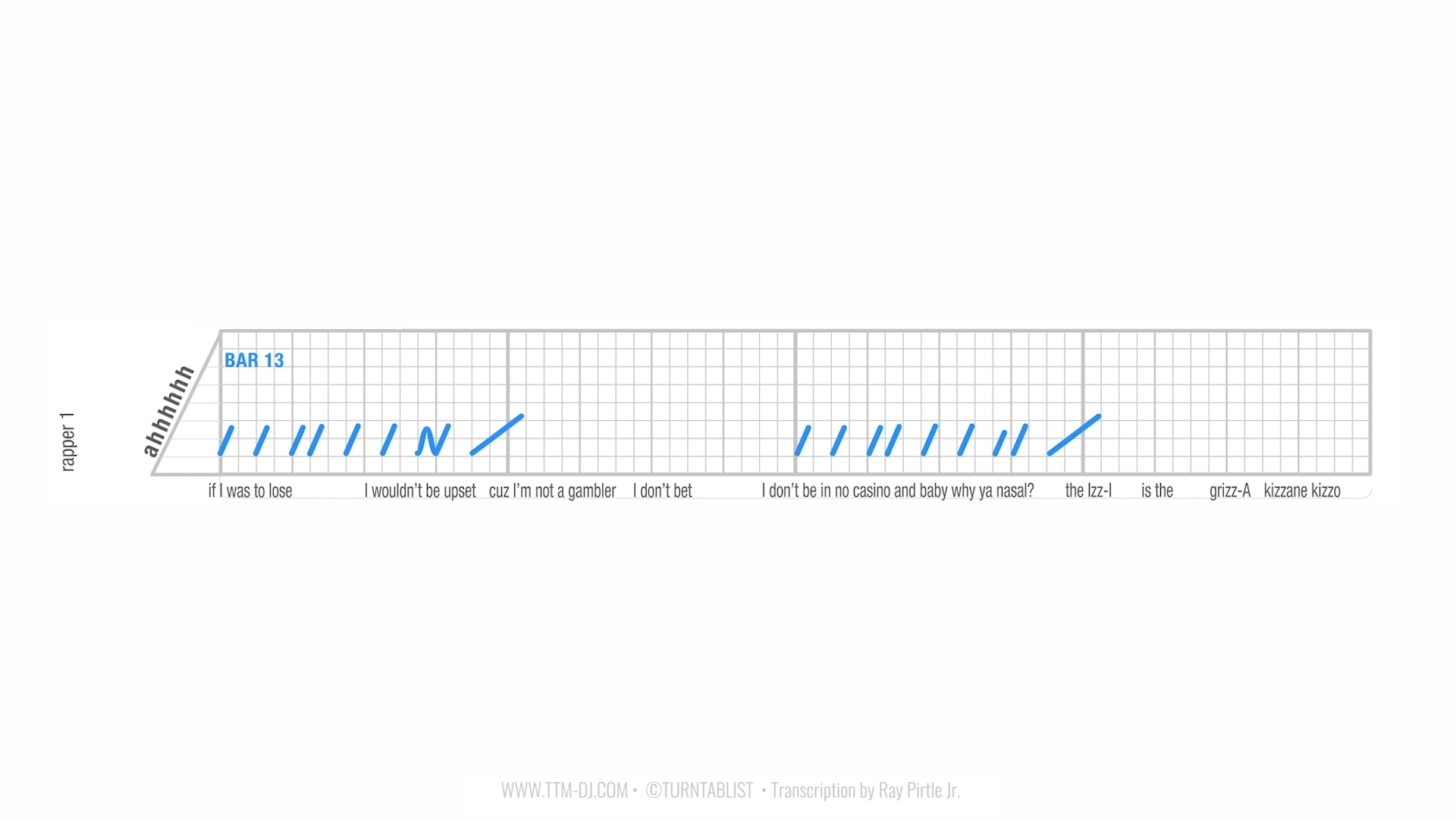
DJ Mix Master Ice grew up in Brooklyn, New York immersed in the energy of the Hip-hop music. Dead-set on being a DJ, Ice explains how his style evolved and it contributed to the group UTFO.
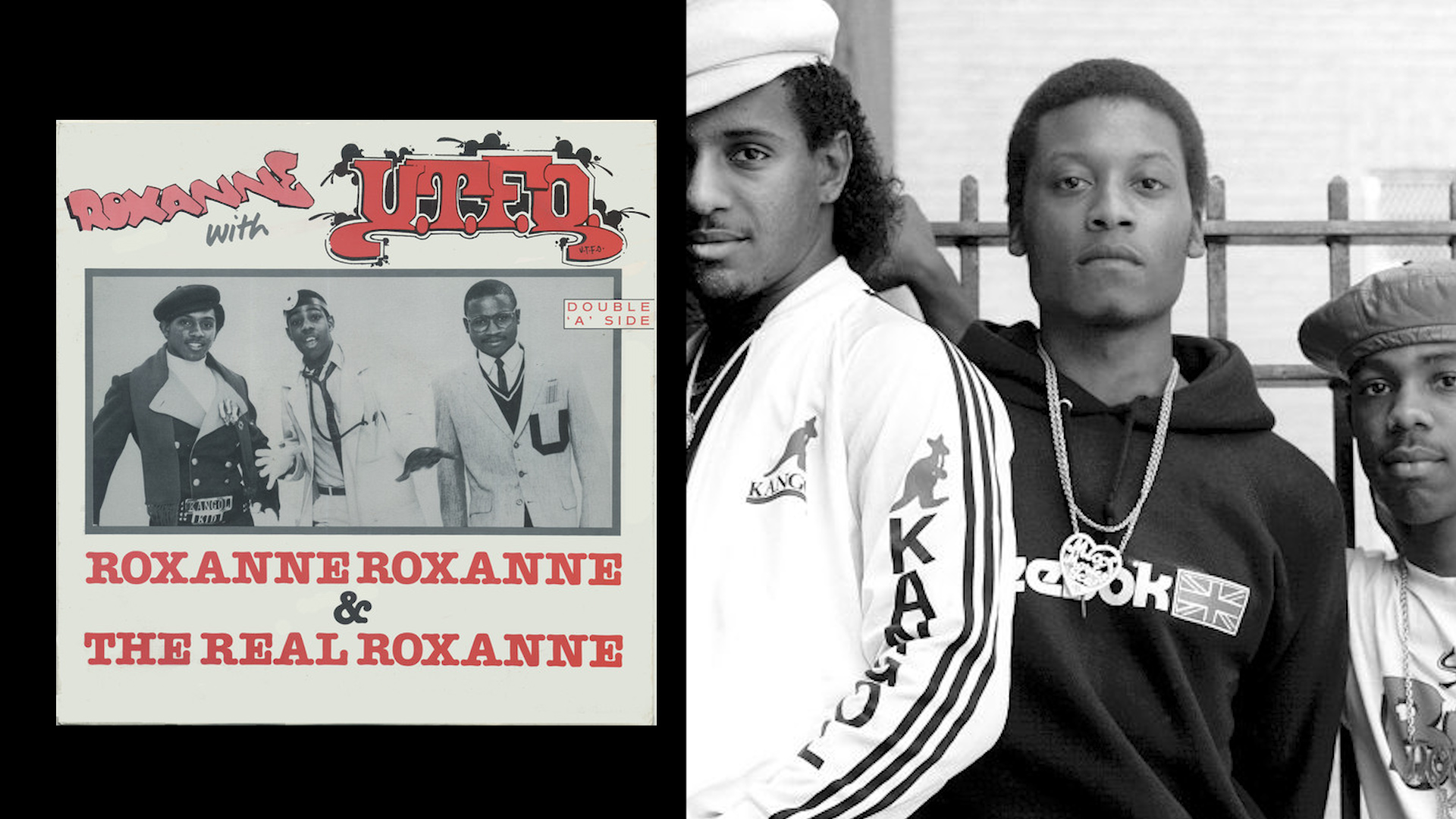
"I knew Grand Master Flash was a beast. I knew Theodore was a beast. So (I said to myself) if I’m going to do this DJ thing, I’m going to be have to be at least on their level or try and take it to the next level. So I just stayed in the house and practiced, and practiced. Because, see with DJing it’s all about that guy who is in the house doing 20 hours. Cause what happens is, you become big, you blow up, now you are on tour, you are in the studio.... But while you are touring and DJing, somebody is in that house putting those 20 hours a day, and when their time comes, they are going to bring something to the table that was just as good and probably better, because all they did was study your style. And I’m was just one those 20 hour a day DJ, that just practiced and practiced..."
"I would listen to tapes over and over and over, and I would have to figure it out on my own how it was done. And what would happen a lot of times as you are playing around you would create a new sound, or new style by trying to figure out what they just did, because you couldn't see them. I think that kind of worked out good for me because I didn't fall into someone else’s pattern."
"So basically on 'Roxanne Roxanne' you had three different rap styles, and three totally different beats, so it only made sense that it would have three totally different scratches. I used the 'Ahh' part of the "Change the beat" (Fab Five Freddie), most people at the time where only messing 'Fresh' part after hearing DSt.
"If you listen to a lot of UTFO records, I was always trying to do something that hadn’t been done before, I was always trying to put something on wax that hadn’t been done before"
The scratches on "Roxanne, Roxanne", have become key scratches in every DJ arsenal, in fact many still call one particular pattern (the outro) " the Mix Master Ice Scratch".
To Ice’s credit, this standard DJ pattern is still practiced and practiced to perfection all over the world, especially by those "20 hour DJs."
The transcription is four parts - the 3 separate styles Ice created for each rapper and the famous outro. On a technical note, the cut is a 3 bar pattern over the 4 bar structure -- which was very unique for that time and still sounds fresh today.
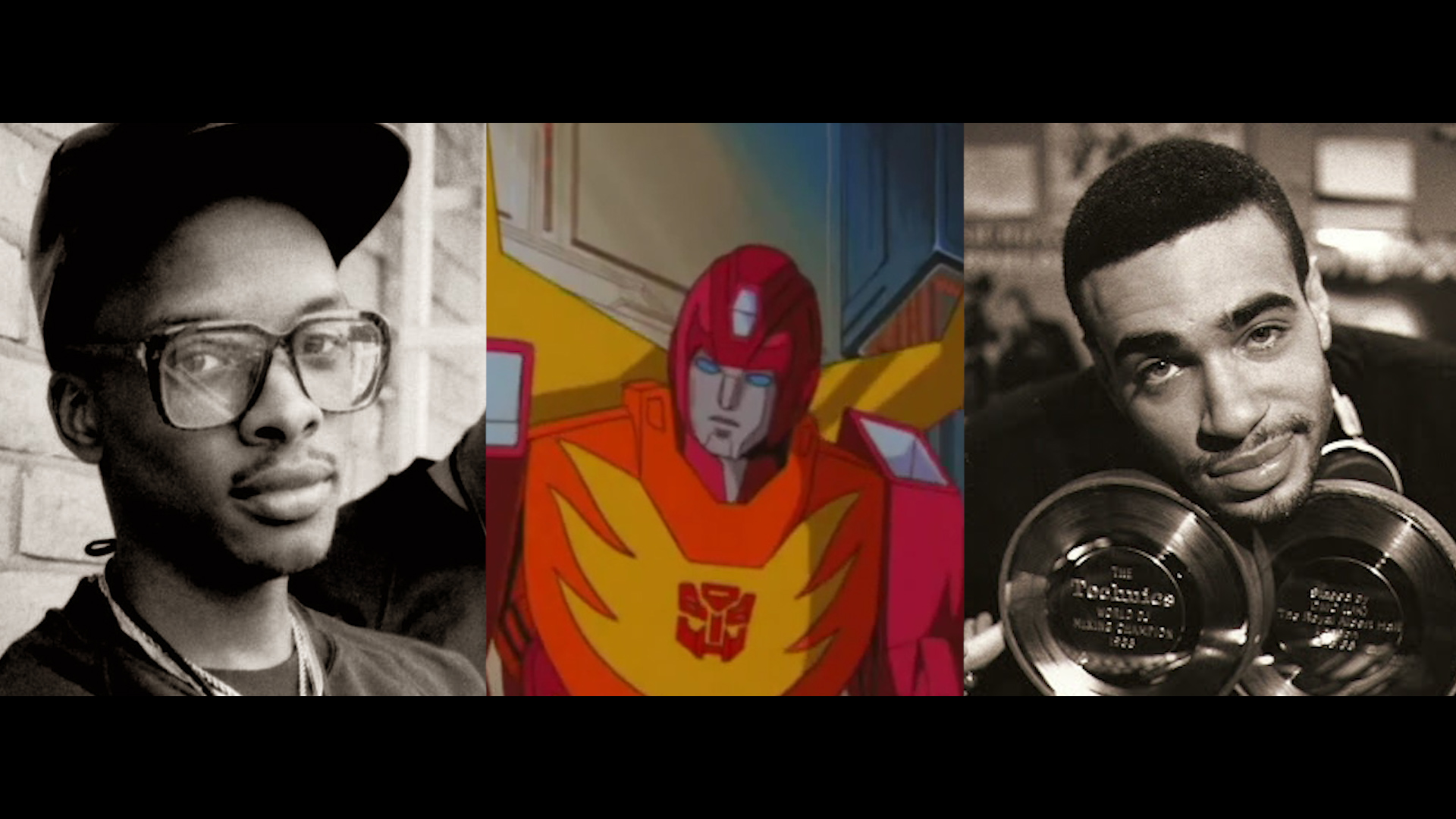
DJ JAZZY JEFF & DJ CASH MONEY
1985 PHILADELPHIA
By the mid-eighties, rap music had hit its stride and was growing at an incredible pace. The New York scene was renowned for its roster of amazing MCs, which was growing daily. Meanwhile, in Philadelphia, a strong Hip-Hop scene was also gathering momentum. Leading the Philly charge was a diverse group of talented and experimental DJs who were not afraid to challenge New York's dominant style.
At about this same time, the first organized DJ battles were being held. Initially, the battles were focused on mixing ability and were populated by club DJs. However, the DJ battle was soon reinvented when DJ Cheese (aka "King Cut") astonished judges with his unprecedented scratching ability at the 1985 New Music Seminar battle. The following year, NMS winner DJ Jazzy Jeff brought "the transformer" to the world, and secured Philly's position on the Hip-Hop map.
Best known as "The Fresh Prince" Will Smith's partner in crime, DJ Jazzy Jeff went beyond the basic DJ techniques with a progressive style of "rhythm scratching" that set the bar high for Hip-hop DJs in the late 80's.
Here's his recollection of the birth of the transformer.
"Philly invented the transformer scratch, that's best way to tell you, because the first person I heard do anything like that was (The Original DJ) Spinbad. Spinbad did something like that, then I took it home, and was like alright he just did it, now I'll put some rhythm to it. Cash (Money) put different rhythm to it. Baby DST was the one in my mom's basement saying "that sounds like a transformer" (cartoon). So it wasn't just me, it wasn't just Cash, it wasn't just Spinbad
It was like what my mom use to say 'Ain't nobody invent nothing, it's just redone.' So somebody did it. I took a piece, he took a piece, he took a piece, and it was crafted."
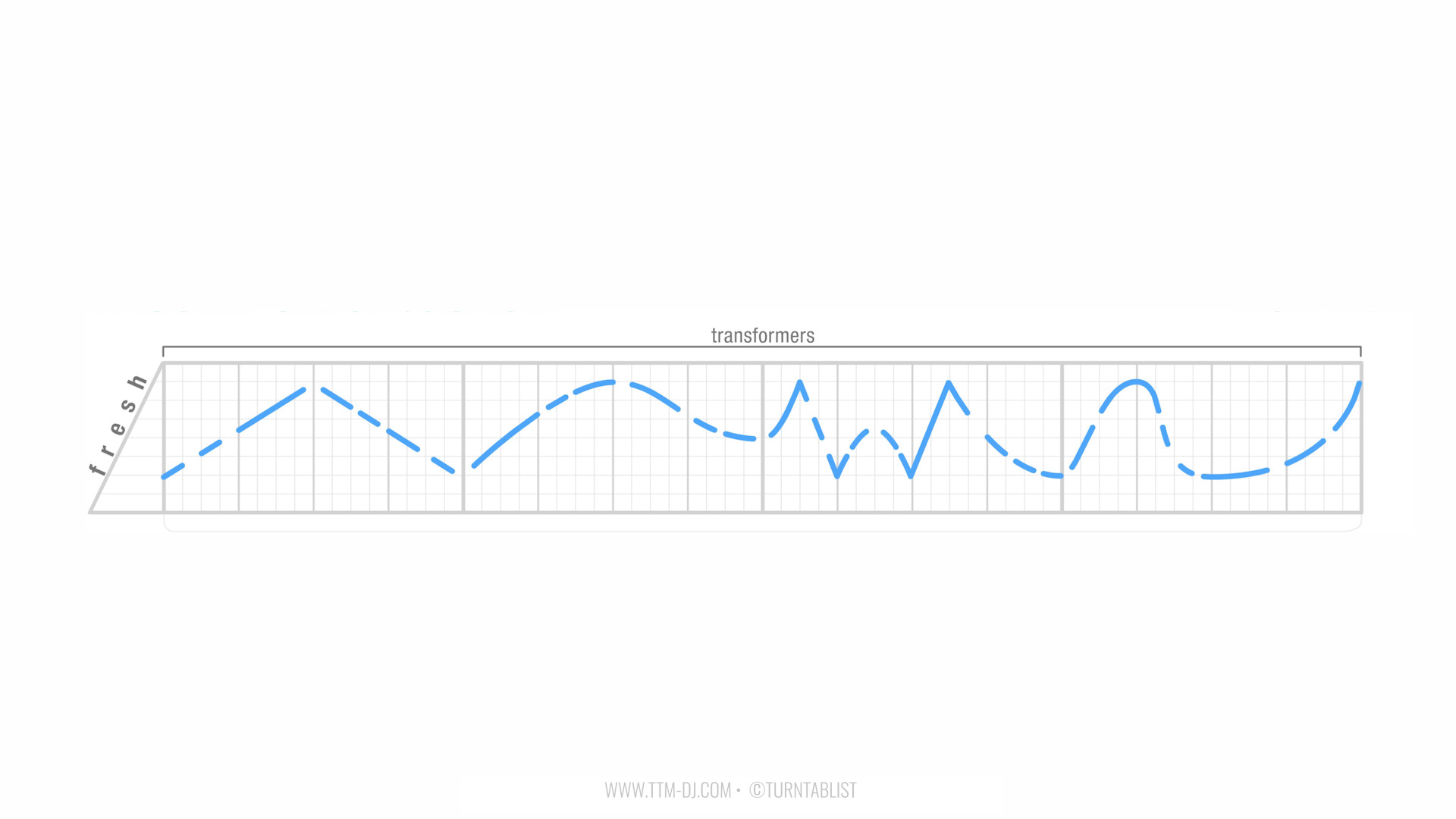
transformer - The record is pulled back and forth while the fader is steadily opened and closed. The sound is cut on and off several times during each forward or backward stroke of the record so that multiple tones are emitted in each cycle. Like chirps, the sound is cut off when the record is changing direction. This results in a chopped sound that varies in pitch (similar to the sound made by Optimus Prime, noble leader of The Transformers).
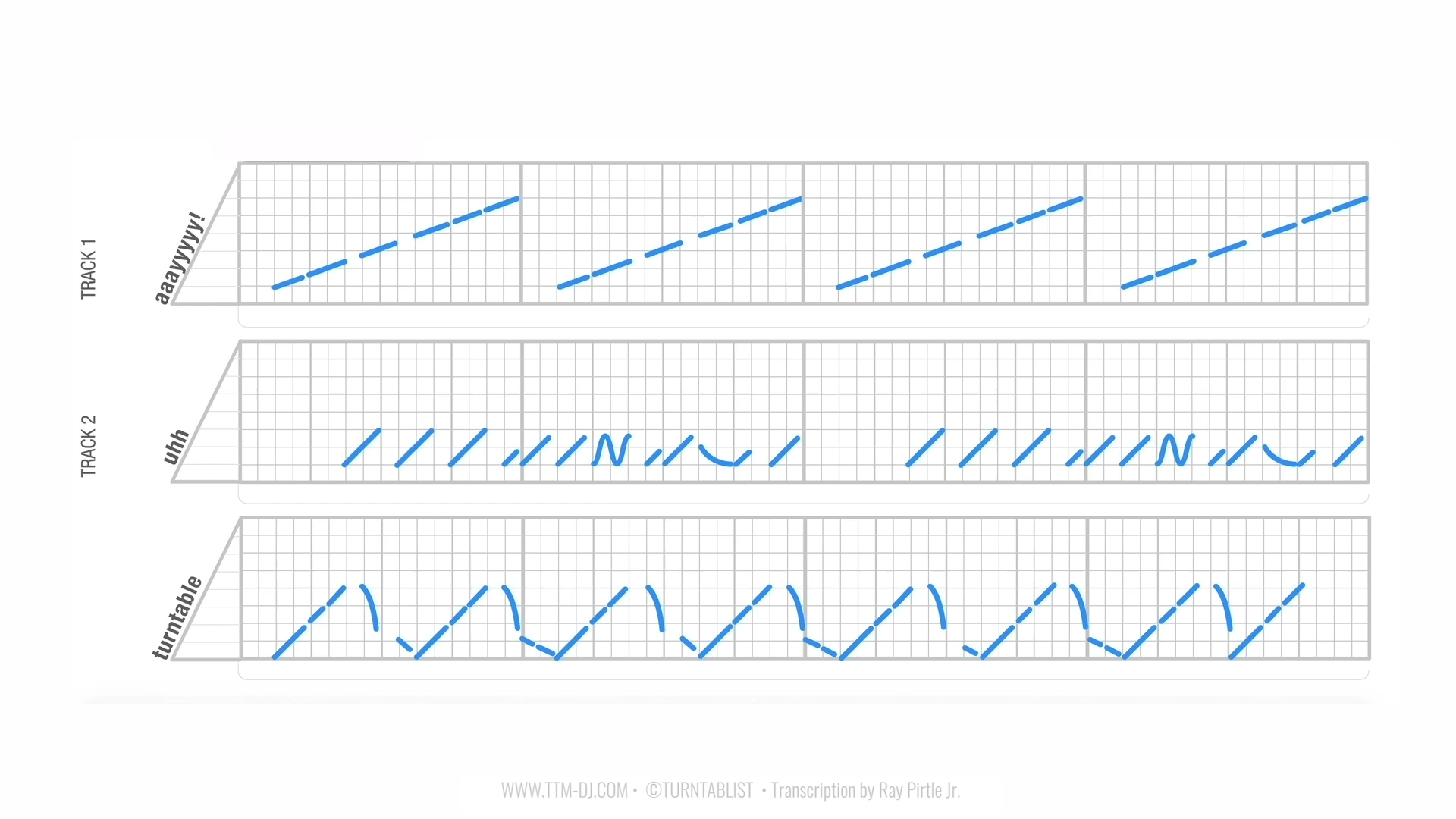
"First off, I just want a track with my name in it," DJ Cash Money says, explaining the motivation behind the recording. "I had seen DJ Cheese at a show and he had pressed up some records that said his name, so I wanted a record with my name on it too... that I could mess with."
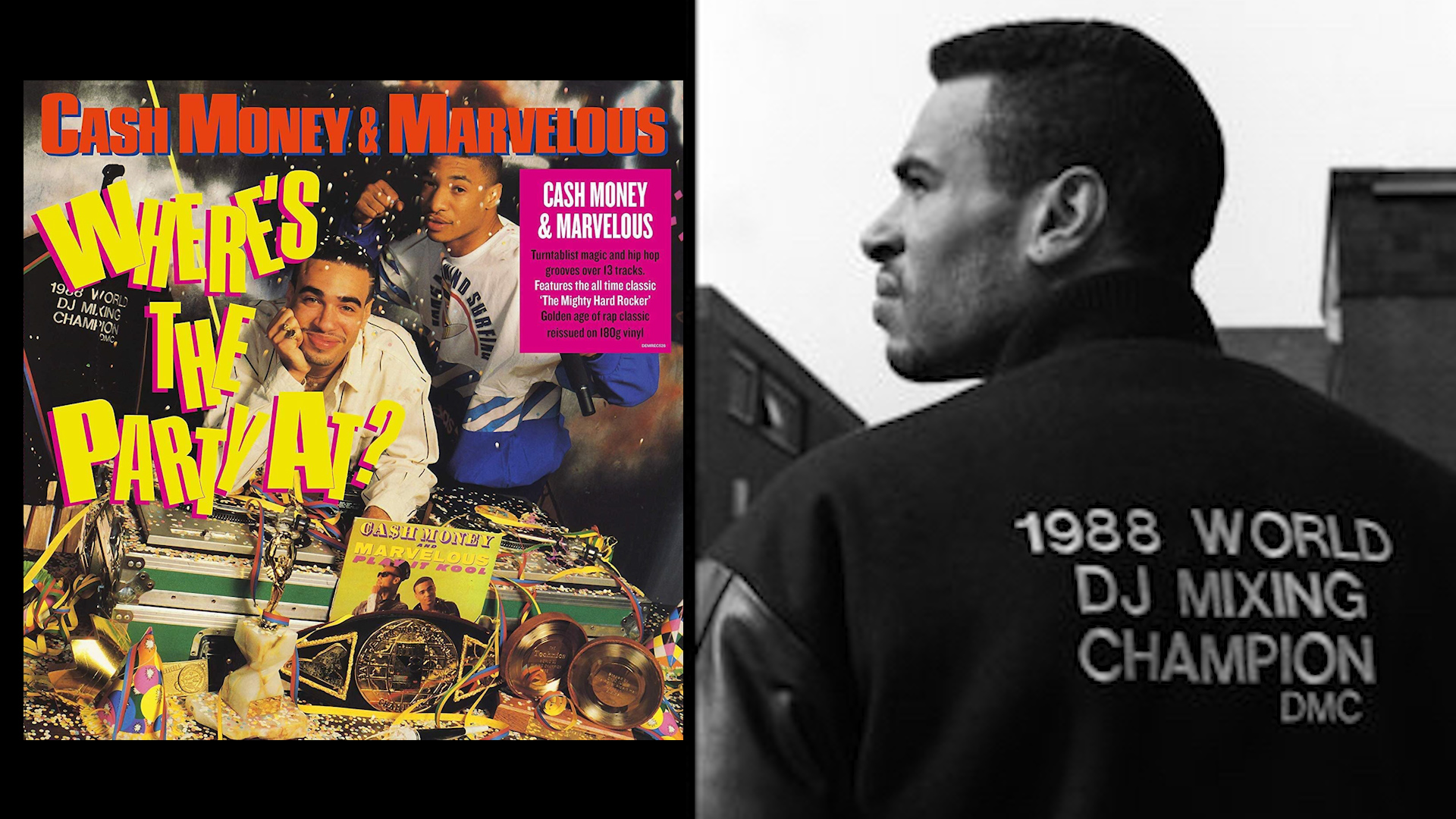
"Now everybody check him out, Cash Money is on the cut" called out MC Marvelous to the crowd prompting his DJ into a powerful response. Cash and Marvelous shot back forth with dynamic phrases on the 1986 track "Ugly People Be Quiet."
Cash got what he wanted, and much more. The track helped solidify him as one of top the DJs at the time. With wins at the New Music Seminar and DMC battles in the same year, Cash’s cuts reinforced a style of scratching pioneered in Philly called rhythm scratching.
Cash explain how the production came about: "We were still using a lot of old breaks, like most people were using back then. But what made it different was that I cut the "whooas" of Billy Squire’s "Big Beat" over a track of me transforming "The Mexican." It was just live remixing and feeling the track. I picked sounds that fit right, even if it wasn’t the part most people used."
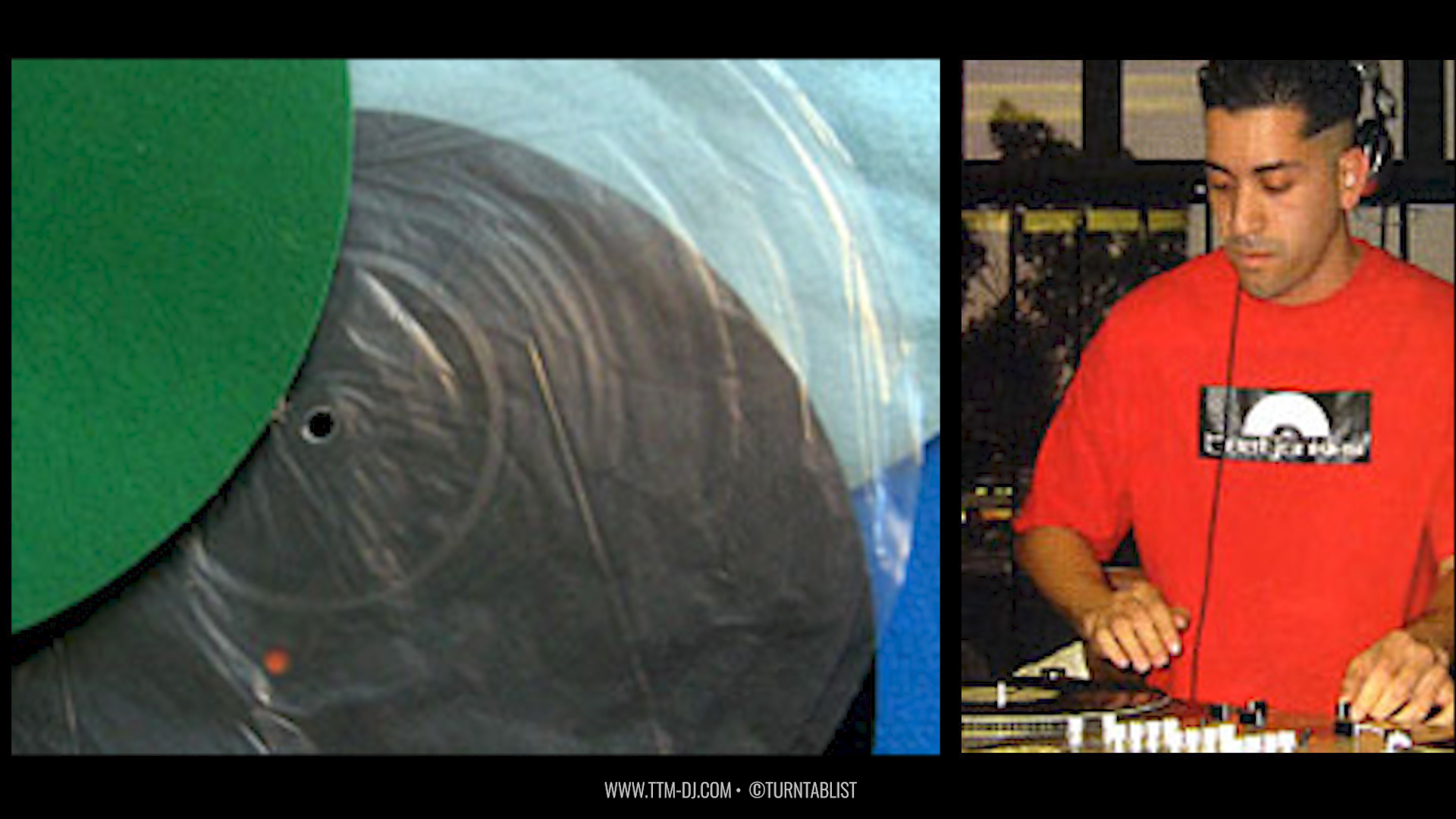
DJ TIP:
CHEAPO SLIP MATS with DJ MELO D
( from Scratch Magazine 2005)
The slip mat is the thin felt like material disc used to reduce the friction between the record and the platter so that you can easily move the record without slowing down the platter and fighting the pull of the turntable’s motor. Such a small and simple addition to your DJ setup, but if you ever performed without them, you know how important your fuzzy friends are! Here’s DJ Melo D’s preference in slip mats, and his tip for what to do if you’re in a bind.
"I use Butter Rugs. they’re a thin felt and give the least resistance. But on one occasion I was left with some freebie slip mats that just didn't work. So I had to make some plastic ones in an emergency."
How to make the plastic slip mat:
1. Locate one of the thin foggy plastic sleeves that come with most 12" vinyl.
2. Lay a record on top of the sleeve.
3. With a pen or marker trace the size of the record, including the hole too.
4. Grab a scissors and start cutting.
You are left with two thin slip mats that are pretty decent.
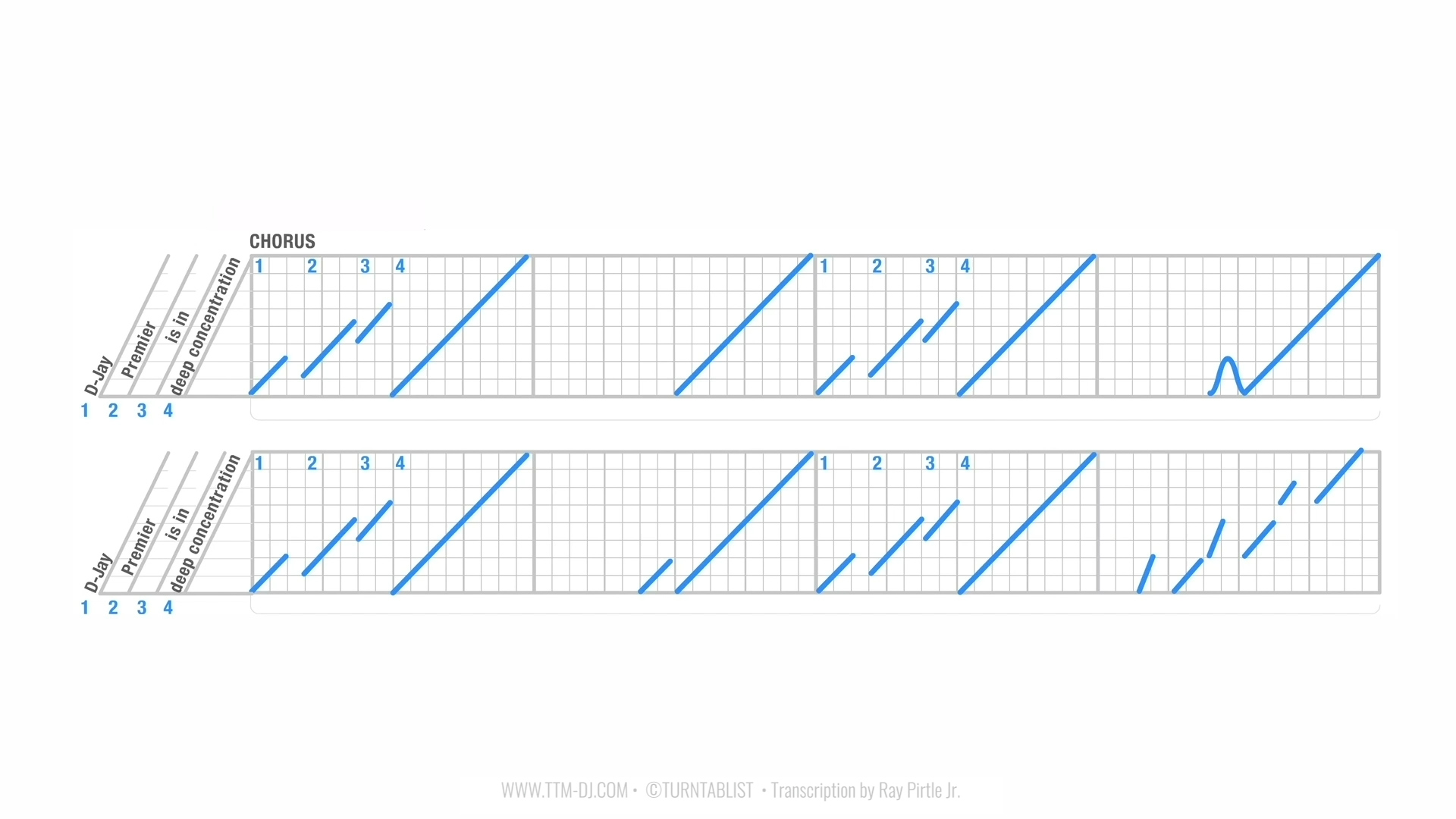
Nowadays, it is rare that a hip-hop album would dedicate a track strictly for the DJ, but as many of us may remember, this was the norm up until the late '80s. DJ Premier In Deep Concentration, is an iconic example this rap album staple.
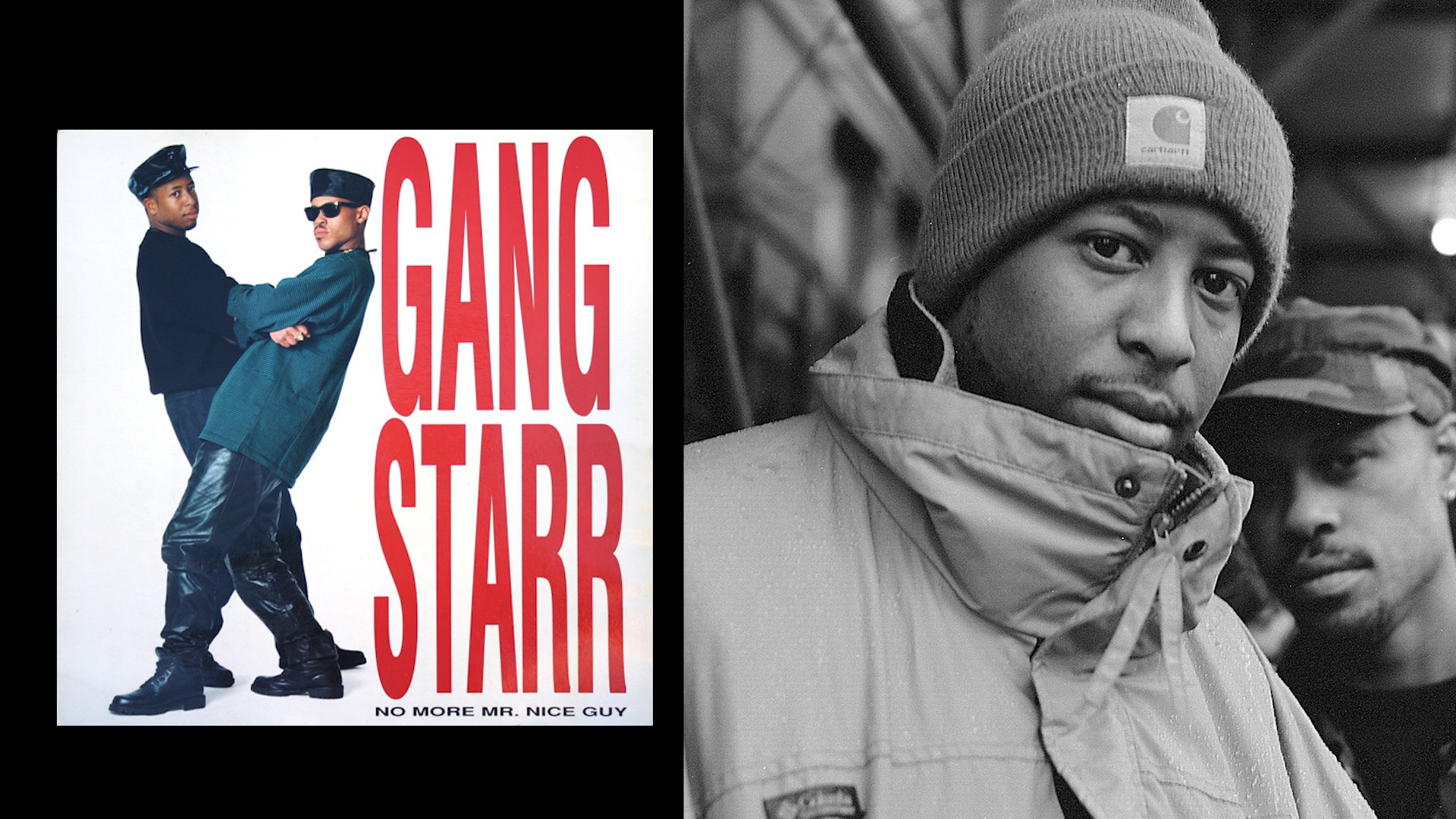
"It embodies that saying – A DJ speaks with his hands," explains DJ Babu of Dilated Peoples, when describing the this Gangstarr track. "Premier was rapping by just using a turntable and a mixer, and his scratches even had this classic New York rapper cadence."
The track with its clear layout, spoke to many, as it illustrated the then current DJ techniques, one at a time, over a smooth jazz track. The smart arrangement of samples and scratches made the track uncomplicated, yet skillful and compelling. The title even inspired The Deep Concentration series on OM Records, which focused on solo DJ tracks, like Premo’s masterpiece.
DJ Premier In Deep Concentration also inspired Babu, who presented his own take with a track on the Dilated Peoples album Neighborhood Watch entitled DJ Babu in Deep Concentration.
"Dilated Peoples has always dedicated a DJ track on every album. It’s part of a classic tradition," says Babu. "I have deep respect for Premier and that track, so when I thought about doing it, I called Premier and he gave his blessing. I use his basic blue print with chorus and verse and put my style to it -- just talk with my hands."
Still to this day, DJ Premier clearly holds it down as an equal partner in the duo Gang Starr; the presence of a DJ is undoubtedly alive in all of his production and performances. Unfortunately, the DJ element in contemporary popular Hip-Hop recordings is minimal compared to that of the past. Premo’s talent and longevity continues earn praise and hope from the DJ community.
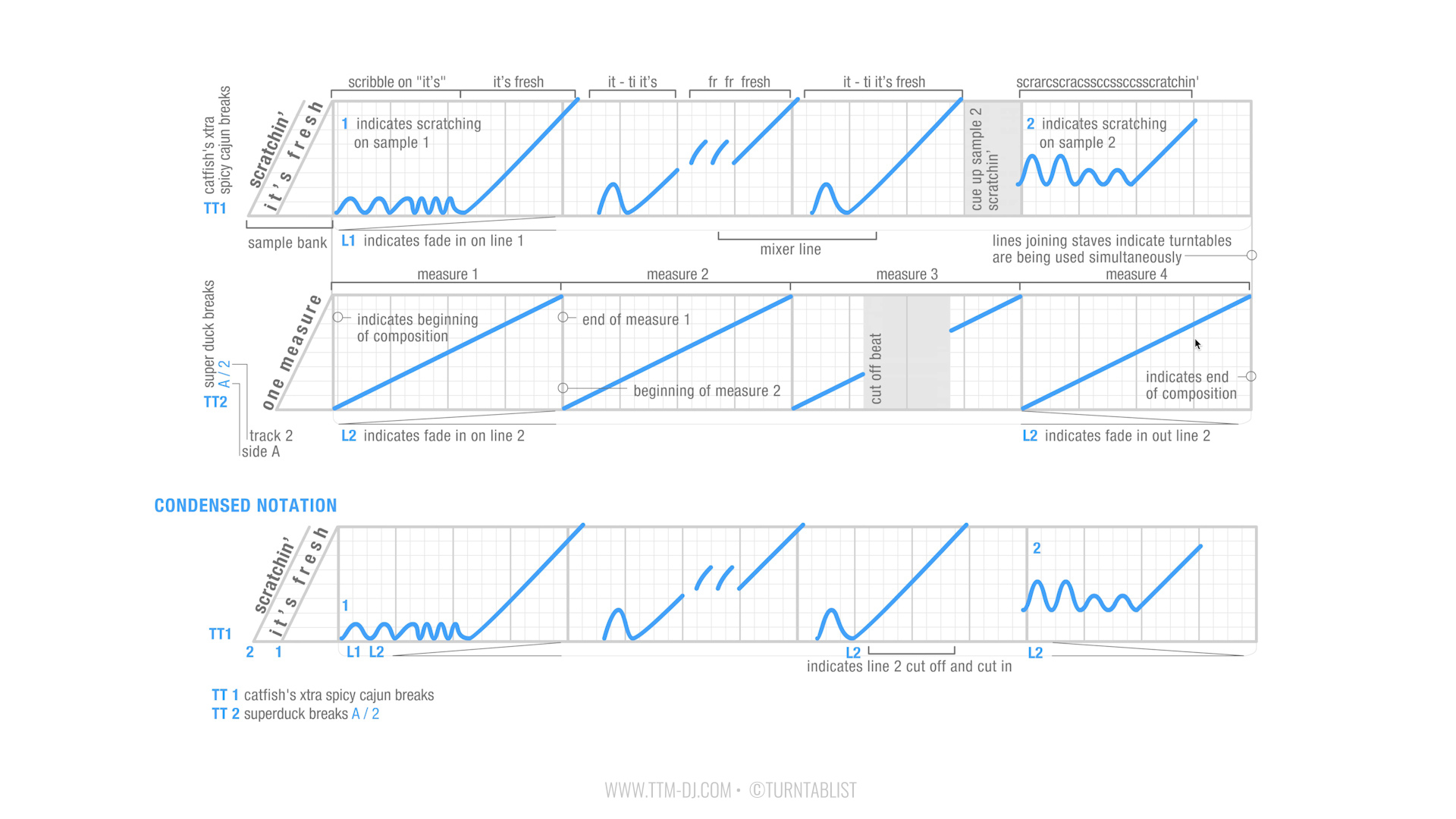
Above is the transcription of two turntables in use. Turntable 1 (TT1) is used for scratching over the beat being played on TT2. One staff is shown for each turntable being used. The vertical bar connecting the two staves indicates that they are played simultaneously.
If you are scratching more than one sound, you can write as many samples as you need in the sample bank area on the left side. Write the sample and track (and if necessary the number of revolutions into the track for a given sample) you are using first nearest the start on line numbered 1, then the following samples next to the appropriate numbers. On the graph portion, be sure to place the number of the new sample at the beginning of the pattern to designate the new sample. (Note: Write only the samples you will need for that measure of bars so it’s not too confusing.) The top transcription illustrates the use of the multiple sample line section on TT1 and a steady beat on TT2.
CONDENSED NOTATION
In the example above in the area "CONDENSED NOTATION", this represents the same score as above, but the notation has been compressed to occupy only a single staff. When there is very little manipulation of a turntable (as is often the case when scratching to a beat), the staff for that turntable can be eliminated; the few manipulations that are required can be summarized in the mixer line of the active turntable. This compressed notation provides a significant space savings.
This lower area is for any additional notes regarding mixer controls and other manipulations effecting the performance. In the example above, fading up Line 1 (L1) and L2 at the beginning of the score, and fading out L2 at the end are noted in the mixer line.



